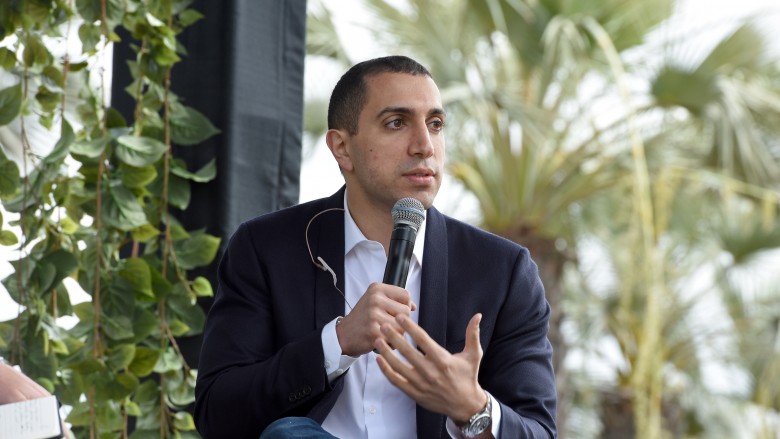Secrets Tinder Doesn\'t Want You To Know About
Online dating has come a long way since the early days of the internet. While it was once seen as sad and desperate (well, it still is kinda sad and desperate), it's gained momentum because it allows you to just keep swiping until you find someone desirable. The most well-known dating app is Tinder, the first to use the swiping format, and it's grown to millions of regular users. But it's not all love and rainbows. The company has had its share of nasty internal problems, and the app itself has occasionally been used for sordid activities other than finding Mr. or Mrs. Right.
Scammers are incredibly common
Those of you who are intimately familiar with the internet have probably encountered some kind of scam. Most of these scams are pretty stupid and easy to weed out if you're careful, but a dating app like Tinder can sometimes remove your common sense or make you particularly susceptible to being duped out of money. Probably the most common form of Tinder scamming is bots. It's not that hard to determine whether or not a profile belongs to a bot. Does the person look like a generic, half-naked model who only sends greetings and emoticons? You might have found a bot. What exactly do these bots lead to, though? Sometimes, they direct users to adult webcam sites or download malware to users' phones, while others have led to advertisements for mobile gaming apps.
In fact, there's even a guide available on the deep web for the best ways to set up a fake account. For the low price of £2.59, you can buy Adhrann's Updated Dating Scam 2014 which details how to be the ultimate scammer. It includes all the hallmarks of your typical lonely hearts swindler ranging from advising guys to target nerdy, middle-aged men to what kinds of photographs you should use: "not a top model, but a normal sexy girl."
Then you have people like Brandon Kiehm, or the "Tinder Grifter" as he's come to be known. In 2015, Kiehm, posing as a Goldman Sachs employee, duped two women out of $26,000 by claiming they were for a phony sister's cancer treatments. Then he decided to use Tinder again to swindle an unsuspecting woman out of $10,000 by claiming his wallet and cards had been stolen and that he needed the money to enter a poker tournament. But he was after an easier jackpot.
It may have increased STIs
STIs are just awful. They serve no purpose other than to make us regret already-regrettable hook-ups. Although they're pretty easy to avoid if you're careful, dating apps like Tinder have allowed people to throw caution to the wind. Rhode Island's Department of Health noted increasing STI rates, including big hitters like syphilis, HIV, and gonorrhea. In response to this, the AIDS Healthcare Foundation started a billboard campaign warning Tinder users about the risk of STIs. (Tinder was obviously pretty pissed off by this and sent the foundation a cease-and-desist order.)
Finally, since Tinder obviously couldn't ignore the fact that its app was under scrutiny for enabling the spread of some of the worst afflictions possible, it agreed to work with the foundation for a solution to the dilemma. Last year in January, Tinder began to offer information on STI testing facilities as a consolation to the AHS Foundation which in turn took down its billboards. Of course, Tinder never actually admitted any wrongdoing, but that's just the beginning of a history of crappy behavior on its part.
Your Tinder info isn't that private
Knowing the very personal nature of what kind of information Tinder users have on their profiles, you'd think the company would use every precaution to keep things private. Not at all. In October 2013, the white-hacking firm Include Security identified a flaw in Tinder's security that allowed for user locations to be identified to a range of 100 feet. According to the firm, the flaw could have existed as early as July 2013, and the hackers discovered in October that the latitude and longitude of matched profiles was being transmitted. The flaw wasn't patched until December of that year.
To freak you out even more, there's an app specifically for creeping on Tinder users. The app, called Swipebuster, costs just $4.95 and allows one to check on another user's Tinder usage. The only information the app needs is first name, age, and general location. A Vanity Fair investigation found the app was usually correct in the information it pulled up about Tinder users. Swipebuster's anonymous founder stated that the purpose of the app was to both show users how public their information was and to allow others to see exactly what their matches/spouses/partners are up to on Tinder. Are you paranoid enough about Tinder dating? Let's hope so.
A female co-founder was harassed out of the company
Back in 2014, a few of the Tinder founders were embroiled in a salacious scandal including the company's CEO Sean Rad, his friend Justin Mateen, and Tinder's sole female co-founder, Whitney Wolfe. Wolfe had actually dated Mateen at one point, but the relationship was old news by the time Tinder started to take off. It seems that the dudes of Tinder treated Wolfe like she had the cooties. Any time there was publicity around Tinder, Wolfe was completely ignored. When she asked why her name was nowhere to be seen on any press releases, she was told that a girl co-founder would make the company "seem like a joke." As awful as that sounds, it gets even worse.
Wolfe was threatened with having her title as co-founder stripped because she was female, in text messages she was called a "whore," and when she went to Sean Rad over the crude messages he told her she was being "dramatic." Finally, Wolfe went to Tinder parent company InterActiveCorps (IAC) with the information. Wolfe resigned from Tinder in April 2014; she would later claim that she had been "bullied" into doing so. Later that year she leveled a sexual harassment lawsuit against the company. The case was reportedly settled for $1 million. Sorry, boys: sexual harrassment runs up an expensive tab.
Sean Rad is pretty creepy
Tinder is a bit like a minefield: you have to move carefully to avoid the more dangerous creeps who lurk there. And it doesn't help that co-founder Sean Rad is one of those guys you would never want to be matched with. After the whole sexual harassment debacle, Rad was demoted but eventually regained his title as CEO. He then did an interview with the Evening Standard in 2015, just before Tinder was supposed to go public on the stock market. The interview was a disaster to say the least. Like an insecure teenager, he had to let us know that he's slept with at least 20 woman and that an unnamed supermodel ("someone really, really famous," he promised) was begging to go to bed with him. He then confused the word "sapiosexual" ("intelligence is sexy") with "sodomy" (uh ... yeah) and gave false numbers about Tinder, claiming there were 80 million Tinder users rather than the actual 9.6 million daily active users. Besides being incorrect, giving out such information before a public offering is an SEC violation, which forced IAC to release a statement disavowing Rad's comments. But wait, there's more!
Believe it or not, Rad managed to make himself even worse further on in the interview when he was talking about a writer for Vanity Fair who wrote a scathing review of Tinder. In what comes off as a vague threat, Rad said he had done "background research" on her and added, "There's some stuff about her as an individual that will make you think differently." Whatever he found — if there actually was anything in the first place — he never released it. Rad finally ended his nauseating reign as CEO in December 2016 when he stepped down from Tinder so he could run an investment fund. Let's hope he keeps his harassing comments to himself this time.





